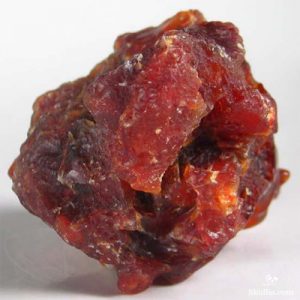Carnelian
Carnelian belongs to the quartz group of minerals, the second most abundant mineral group on earth. Carnelian is a translucent, reddish-orange variety of Chalcedony which is a form of cryptocrystalline, or fine-grained, Quartz by having a microstructure that is fibrous. Carnelian is coloured shades of red, brown or orange by the presence of Iron Oxide (FeO). It’s often translucent to opaque, rarely fully clear and often found as cabochons or carvings but can be faceted additionally. It really is a very material that is attractive colours of bright orange to deep red. The most popular shapes include round, oval, and cushion-shaped stones, but there are also many fancy shapes available, including hearts and marquise shapes. Carnelian is typically untreated, but it can be colour-enhanced through heating.
Carnelian is found in many locations worldwide including Brazil; Mozambique; Arizona and New Mexico, United States Of America.
| Chemical Formula: | SiO2 (Quartz) + FeO |
| Silicon Dioxide + Iron Oxide | |
| Crystal Structure: | Cryptocrystalline – microcrystalline aggregate (Trigonal) |
| Color: | Brownish-red, red, orange, yellow-orange. |
| Hardness: | 6.5 – 7 |
| Refractive Index: | 1.530 – 1.540 |
| Luster: | Waxy – dull |
| Density: | 2.60 – 2.64 |
| Cleavage: | None |
| Transparency: | Translucent to opaque |
| Birefringence: | Up to 0.004 |


